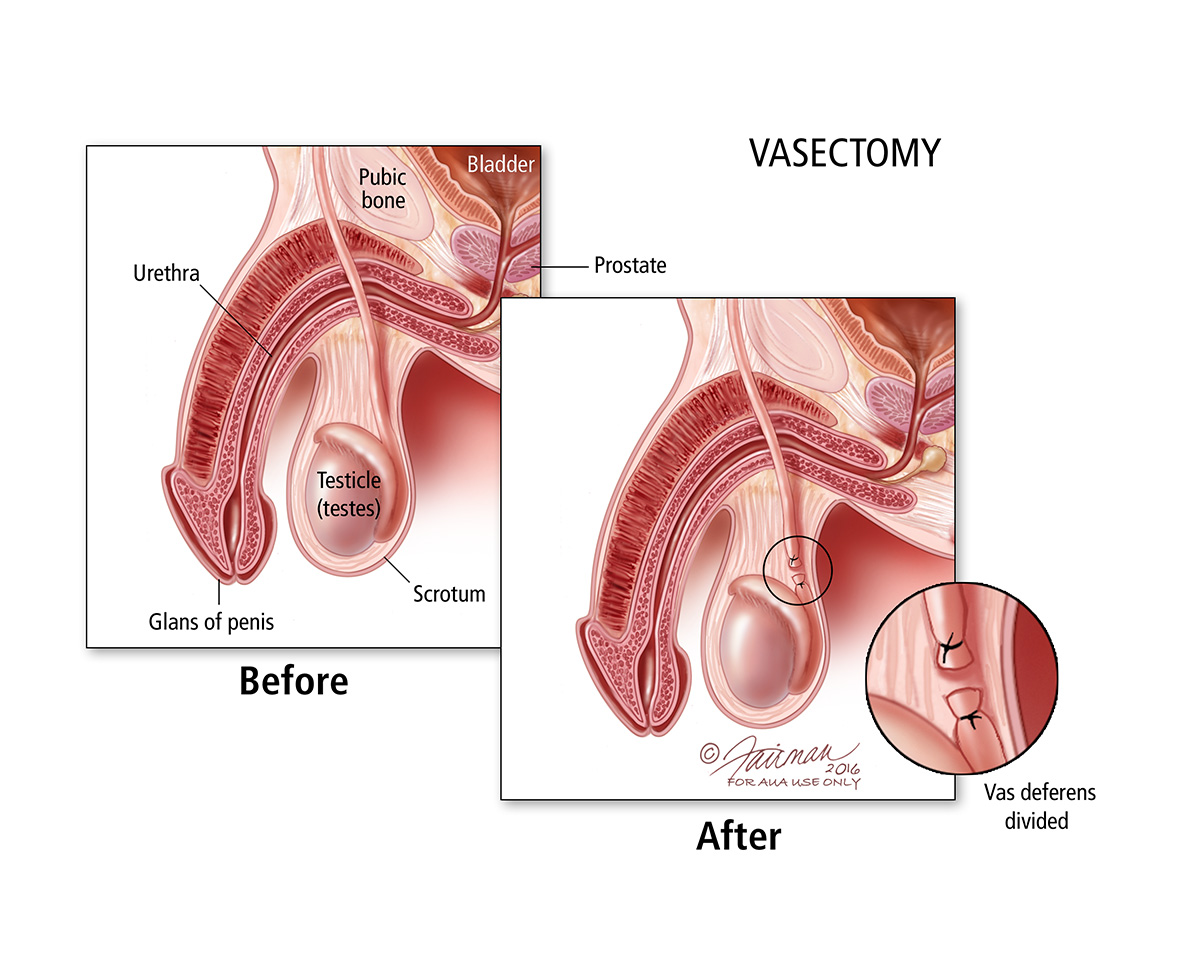Vasectomy
"Understanding Vasectomy: Procedure, Benefits, and Considerations"

Vasectomy is a surgical procedure that involves cutting or blocking the tubes that carry sperm from the testicles to the urethra, which is the tube that carries urine out of the body.
What is Vasectomy:
Vasectomy It is a permanent form of contraception for men and is an effective way to prevent unwanted pregnancy.
Procedure:
The procedure is usually performed under local anesthesia and takes around 30 minutes to complete. The doctor makes one or two small incisions in the scrotum and then cuts or blocks the vas deferens, which are the tubes that carry sperm. After the procedure, the man can go home the same day and resume normal activities within a few days.
Benefits:
Vasectomy is a highly effective form of contraception. According to the American Urological Association, the failure rate of vasectomy is less than 1%. This means that only 1 in 1000 women will get pregnant within the first year after their partner has had a vasectomy.
Another benefit of vasectomy is that it is a permanent form of contraception. Unlike other forms of birth control, such as condoms or the pill, vasectomy does not require ongoing maintenance or remember to use it each time. It is a one-time procedure that offers long-term peace of mind.
Vasectomy is also a safe and low-risk procedure. Complications are rare and include infection, bleeding, or inflammation. However, these complications are usually minor and can be easily treated with medication.
Considerations:
Vasectomy is a permanent form of contraception, and it should only be considered by men who are sure they do not want to have any more children. While the procedure can sometimes be reversed, it is not always successful, and it is generally more complicated and expensive than the original vasectomy.
Before deciding to have a vasectomy, it is important to consider other factors, such as age, relationship status, and future plans. If a man is unsure about whether he wants to have children in the future, vasectomy may not be the best option. It is also important to discuss the decision with a partner, as it may affect the dynamics of the relationship.
Vasectomy does not offer protection against sexually transmitted infections (STIs). It is important to continue using condoms to prevent the spread of STIs.
Conclusion:
Vasectomy is a safe and effective form of contraception for men who are sure they do not want to have any more children. The procedure is quick and easy, and complications are rare. However, it is a permanent form of contraception, and it should only be considered after careful consideration of all the factors involved. If you are considering a vasectomy, talk to your doctor to find out if it is the right choice for you.
Vasectomy How To Get it?
If you are interested in getting a vasectomy, the first step is to talk to your doctor or a urologist. They will be able to provide you with information on the procedure, the benefits, and the considerations. Here are the steps to follow to get a vasectomy:
Talk to your doctor or urologist: The first step is to schedule an appointment with a doctor or urologist who performs vasectomies. During the appointment, the doctor will discuss the procedure with you, answer any questions you may have, and ensure that you are a good candidate for the procedure.
Preparation for the procedure: Before the procedure, the doctor may request that you undergo certain tests or exams, such as a physical exam, blood tests, or a semen analysis. They will also give you instructions on how to prepare for the procedure, such as avoiding blood-thinning medication, arranging for someone to drive you home after the procedure, and arranging for time off work.
Procedure day: On the day of the procedure, you will be given local anesthesia to numb the area around the scrotum. The doctor will then make a small incision in the scrotum and locate the vas deferens. They will then cut or block the tubes to prevent sperm from being released during ejaculation. The procedure takes around 30 minutes to complete, and you can go home the same day.
Recovery: After the procedure, you will need to rest for a few days and avoid heavy lifting or strenuous activity. The doctor will give you instructions on how to care for the incision and when you can resume normal activities. You may also need to wear a supportive garment for a few days after the procedure.
Follow-up: The doctor will schedule a follow-up appointment to check on your recovery and ensure that the procedure was successful. They may also perform a semen analysis a few months after the procedure to confirm that there are no sperm in your semen.

If you want to get amazing benefits by using this link
Conclusion:
In some cases, insurance may cover the cost of the procedure, but it is important to check with your insurance provider beforehand. If insurance does not cover the cost, the procedure can cost anywhere from a few hundred to a few thousand dollars, depending on the location and the healthcare provider.
In conclusion, getting a vasectomy involves a few simple steps, starting with a conversation with your doctor or urologist. With careful consideration and preparation, vasectomy can be a safe and effective form of contraception for men.


